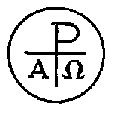
FAIR is a non-profit organization dedicated to providing well-documented answers to criticisms of the doctrine, practice, and history of The Church of Jesus Christ of Latter-day Saints.
| Answers portal |
| God |

|
|
This page is based on an answer to a question submitted to the FAIR web site, or a frequently asked question.
====
What is Kolob? I've heard that Mormons believe God lives there.
====
"Kolob" is the name given to the star closest to the throne of God in Abraham 3꞉3. It is introduced in an effort to teach Abraham that there is a hierarchy in all things. There are many stars, and one star is "closest" to God. In a similar way, there are many intelligences, or moral agents, some greater than others. The greatest of these is God.
Thus, "Kolob" is introduced in a rather peripheral way in an effort to teach about the supremacy of God:
In an effort to make the Church look bizarre, many critics mock the idea of "God living on the planet Kolob." This is false as God does not live on Kolob. Kolob plays no real role in LDS doctrine or discourse. The only other mention comes from a 19th century hymn, which uses Kolob in its first line to describe the glorious life of those who return to God:[1]
Because LDS theology believes in a God with a physical body, it is not surprising that one might speak of God's location in physical space. Creedal Christian critics who believe in a God without "body, parts, or passions" exploit this difference in perspective to make LDS beliefs seem blasphemous or bizarre. But, to speak of God as having location is no more strange than to speak of Jesus' physical location in Bethlehem or Jerusalem during His mortal life.
====
The Church answered this question as posed by Fox News succinctly:
==
The best article(s) to read next on this topic is/are:
Template:Godwiki Template:JesusWiki

FAIR is a non-profit organization dedicated to providing well-documented answers to criticisms of the doctrine, practice, and history of The Church of Jesus Christ of Latter-day Saints.
We are a volunteer organization. We invite you to give back.
Donate Now